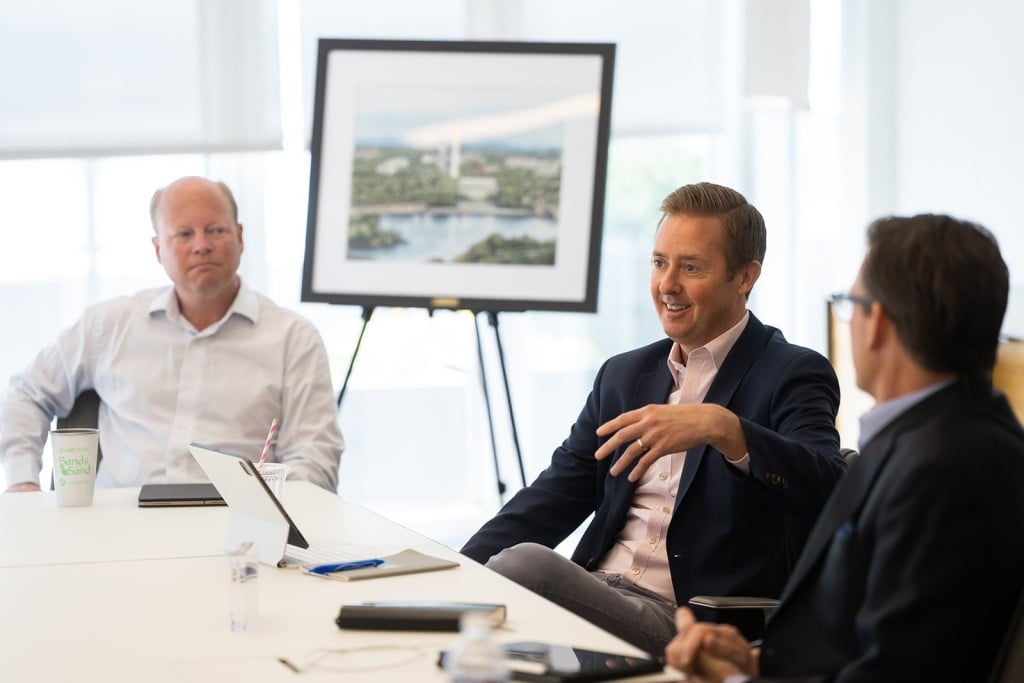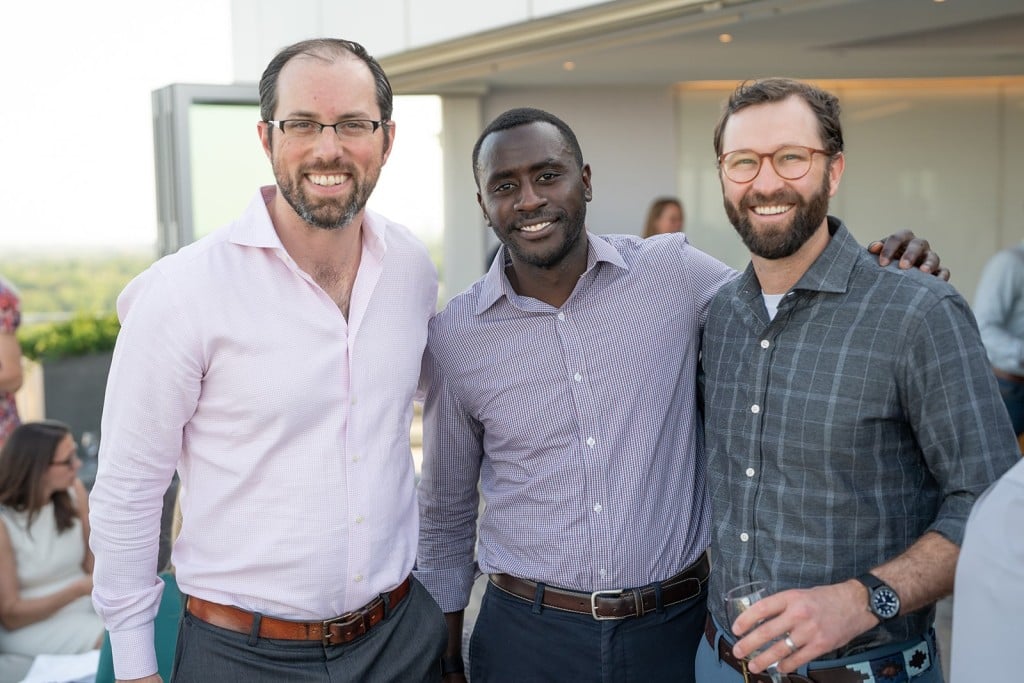Contributors
Related Articles
U.S. markets have recovered following 2022’s historic selloff, leading some to question what comes next. Valuations are elevated, the cost of capital is the highest it’s been in decades, and overall economic and geopolitical uncertainty remains. In this environment, we believe certain active approaches are better positioned to benefit than others.
Key Points
- Passive investment strategies have served investors well over the past decade, but this may change in the decade ahead. The combination of a changing macroeconomic and market environment—coupled with elevated broad-market valuations—suggests a dim outlook for index-level returns.
- Amid this backdrop, a different approach—an active approach—seeks to deliver the absolute returns sought by investors. We expect a more favorable environment for these types of approaches, given the acceleration of innovation and disruption, dispersion among businesses given structurally higher interest rates, and changes to the investment industry.
- Select Growth has always added relative value in the relevant five- and 10-year periods following its largest declines. Today, we believe the portfolio is well positioned to benefit, as it can apply its integrated research and selection criteria to seek to deliver strong long-term results amid the changing investment landscape.
U.S. markets have recovered following 2022’s historic selloff, leading some to question what comes next. Valuations are elevated, the cost of capital is the highest it’s been in decades, and overall economic and geopolitical uncertainty remains.
In this environment, we believe certain active approaches are better positioned to benefit than others. Our brand of active investing applies deep, business-focused research to identify leading innovative companies with sustainable competitive advantages, and it organizes those businesses in concentrated portfolios over long holding periods to maximize impact. We believe this approach to active investing is especially well-positioned to add value for clients.
Future Returns Will Likely Be Lower
In the decade following the Great Financial Crisis of 2007 to 2009, passive investment strategies generated historically strong returns for U.S. equity investors. However, 2022’s market correction may usher in a new market era. Deglobalization, the transition to green energy, and persistent labor shortages are all inflationary, which may keep rates structurally elevated, raise input costs, and subsequently threaten near-record-high profit margins for U.S. equities. This comes at a time when equity valuations, such as the equity risk premium and Shiller Cyclically Adjusted PE (CAPE) ratio, are at historically rich levels that typically suggest below-average forward-looking returns.
We have never claimed any aptitude or interest in timing markets or regime changes, and we aren’t going to start now. But given the market environment, we believe investors should consider the risks, opportunity costs, and prospective returns of passively investing in equities. With potentially lower future returns, there could be a mismatch between what many investors need and what they will be able to passively achieve.
For example, before 2021, the conventional wisdom was that most endowments had to generate 7 percent to 8 percent returns annually to meet their long-term funding requirements and maintain purchasing power. In a new era with potentially structurally higher inflation, this return objective will need to be even higher— exceeding the prospective returns historically seen from current market price-earnings ratio levels. Institutions may find it increasingly difficult to deliver the inflation-adjusted returns necessary to fund distributions without permanently impairing their capital bases. Underfunded pension plans—often with similar or even higher return objectives—could face even more dire situations in a lower-return environment.
Shiller CAPE P/E v. Forward 10-Year S&P 500 Returns
Many investors will need to embrace strategies with the potential to deliver higher absolute returns. Increasing leverage is one way. Another, more prudent approach is investing in differentiated active strategies with credible approaches to identifying opportunities.
Active Tailwinds
Just as the overall environment for equities is changing, so is the landscape for active investors. We believe there are three distinct factors at play that will especially advantage active approaches:
- Accelerating Innovation and Disruption: Artificial intelligence (AI) is set to accelerate the pace of innovation and disruption in equity markets. Inevitably, new use cases for AI will emerge as businesses will integrate or be built on this technology to drive significant value creation across industries. Meanwhile, businesses that fail to adapt are likely at risk.
While select megacap growth businesses are well positioned to benefit from AI, over time, we expect the most significant value creation will come from AI-enabled business models that introduce novel software, services, and/or completely new use cases. Looking ahead, we expect that strategies that can identify innovative businesses and avoid those at risk of disruption will be uniquely advantaged. These strategies will likely have high “active share”—in other words, a high degree of differentiation from the benchmark.
The iPhone’s launch in 2007 enabled entirely new business models, end markets, and behaviors from on-demand food delivery to “swiping right.” Our research is focused on identifying the next crop of businesses that will be enabled by AI’s proliferation.
- Receding Capital Availability: Persistent low real yields following the Global Financial Crisis subsidized lower-quality business models and artificially elevated competitive intensity, in our view. However, structural forces have emerged to move real yields higher, which historically created a favorable environment for security selection.
In these periods, a higher cost of capital tends to benefit businesses with the largest scale, competitive advantages, and financial strength, emphasizing the need for selectivity in security selection. As a result of these conditions, we have already seen the leading food delivery, ride-hailing, and streaming video providers (as illustrated below) further entrench their leadership positions at the expense of weaker competitors.
2022E Operating Income (Streaming)
- Industry Dynamics: The investment management industry’s structure is changing. Fee pressures and performance woes have resulted in record industry consolidation, with acquisitions and layoffs. Many firms have resorted to asset gathering and undifferentiated strategies based on marketable buzzwords and fleeting fads, further reducing the number of strategies truly focused on price discovery. Ironically, declining active share among managers—in an attempt to dampen volatility and retain assets—has likely contributed to the industry’s overall lackluster performance.
Additionally, regulation that unbundles the cost of sell-side research from trading commissions is resulting in less research coverage, potentially worsening market inefficiencies. Institutional Investor reported that 7,500 years of collective research experience has been lost since the European Securities and Markets Authority enacted MiFID II in 2018.1 This reduction results in fewer people fishing in a better-stocked pond, creating greater alpha-generation potential.
We expect an improving environment for active equity investing, but not all active strategies are created equal. Due to the asymmetric nature of equity returns, we believe that successful active strategies create value for clients by finding the select truly special businesses and owning them at large weights during their fastest periods of growth.
History shows that the vast majority of wealth creation has been concentrated in a small number of exceptional companies. Over the 30 years ended in 2022, a mere 2 percent of all businesses accounted for more than 90 percent of the market’s return. Sixty percent of businesses actually destroyed value.2
This math demonstrates the importance of identifying the 2 percent, having the fortitude to own it in meaningful weights, and participating in its full growth potential. Investors must do all this while avoiding many companies that will ultimately lose value. This quest for the 2 percent may sound like trying to find a needle in a haystack, but, in our view, it’s much simpler than that. Over the long term, stock prices typically follow the earnings growth and power of the underlying businesses. The solution, therefore, lies in finding the select companies that can sustain above-average growth for long periods and in having confidence that returns will follow. We use our six criteria in search of these businesses. Our experience has reinforced our view that our criteria-driven approach is not only repeatable, but it is also durable across economic environment and investment landscapes.
Select Growth: Positioned for the Road Ahead
Despite Select Growth’s rebound in the first half of 2023, history tells us that this is probably an opportune time to invest. Following our 10 worst drawdowns since inception, Select Growth delivered annualized excess returns of 4.6 percent over five years and 3.6 percent over 10 years, on average and net of fees and expenses. Notably, none of these periods were followed by a five- or 10-year period of underperformance. In other words, Select Growth has always added relative value in the relevant five- and 10-year periods following its largest declines. While past performance does not guarantee future results, we don’t see anything that causes us to believe this time will be any different.
10 Worst Peak-to-Trough Drawdowns
History can be a useful guide, but we believe today’s portfolio is well-prepared for what could be a changing market environment.
- Positioning for a Paradigm Shift: Over 30 years of growth equity investing, we have observed multiple paradigm shifts that inform how we position portfolios today. When a paradigm shift begins, we have found that the first investment opportunities tend to be in infrastructure. Without putting this foundational layer in place, nothing else can be built. As time progresses, some parts of hardware and infrastructure will begin to mature, and the opportunities will shift into parts of the value chain that can add value by enabling additional capabilities. Ultimately, the greatest and likely most enduring opportunities will be in what we call the “usage” phase, comprising the software and content that will be able to take advantage of the new paradigm.
Following this framework, we believe the portfolio is well positioned to benefit from this tech paradigm shift through exposure to the infrastructure providers and existing software and services providers that are rapidly adopting generative AI, such as ChatGPT, to augment existing applications and product offerings. Moving forward, we will focus on companies that are finding new AI use cases, and we will try to understand the second-order effects. Over the next 10 to 15 years, we expect these will become some of our largest and most durable investments.
- Integration of Public and Private Markets Research: Amid the accelerating disruption enabled by AI, we believe perspectives gained in private markets are increasingly critical. The integration of our private and public markets research teams provides us a front-row seat to observe burgeoning use cases provided by AI-native business models that may ultimately enter public markets and disrupt incumbents. Similar to the advantages that we saw with being “cloud native” (faster, lower cost, more scalability, ability to create better products), we expect some businesses to capitalize on the “innovators dilemma” facing incumbent businesses and to benefit from an AI-native business structure.
- “Great,” Not Merely “Good”: We’ve always been ruthless with our application of our investment criteria and, in a higher cost-of-capital environment, we believe this discipline is increasingly critical. We continue to vigorously stress-test our existing businesses—while continuing to search the landscape for new opportunities—to determine that we own only the few truly great, businesses. It’s our view that these businesses with attractive unit economics, secular tailwinds, competitive advantages, and appropriate levels of debt can weather challenging operating environments and often strengthen their competitive position relative to weaker competitors.
We may see stock-price volatility from day to day or quarter to quarter. However, we continue to believe that our criteria-driven process will deliver strong results over the long term, as Select Growth has, on average, since its inception.
Conclusion
In a world of lower absolute returns, we believe that investors should seek alpha-generating strategies to achieve their return goals. However, we believe that true success lies in the ability to exploit the asymmetric nature of long-term stock-price returns. We continue to rigorously apply our criteria to seek to identify the businesses at the forefront of disruptive innovation and expect that our approach will deliver strong long-term results for our clients.
1 Julie Segal, “The Equity Research Brain Drain,” Institutional Investor, March 8, 2021, https://www.institutionalinvestor.com/article/b1qtyzy3khq4ny/The-Equity-Research-Brain-Drain.
2 Hendrik Bessembinder, “Do Stocks Outperform Treasury Bills?” Journal of Financial Economics, Vol. 129, No. 3, September 2018, 440-457, and Hendrik Bessembinder, “Shareholder Wealth Enhancement Outcomes, 1926 to 2022,” Working Paper, May 2023.
Disclosures:
The views expressed are the opinion of Sands Capital and are not intended as a forecast, a guarantee of future results, investment recommendations, or an offer to buy or sell any securities. The views expressed were current as of the date indicated and are subject to change.
The investment results are those of the Select Growth Tax Exempt Institutional Equity Composite as of July 2023. This material may contain forward-looking statements, which are subject to uncertainty and contingencies outside of Sands Capital’s control. Readers should not place undue reliance upon these forward-looking statements. There is no guarantee that Sands Capital will meet its stated goals. Past performance is not indicative of future results. All investments are subject to market risk, including the possible loss of principal. The strategy’s growth investing style may become out of favor, which may result in periods of underperformance. The strategy is concentrated in a limited number of holdings. As a result, poor performance by a single large holding of the strategy would adversely affect its performance more than if the strategy were invested in a larger number of companies. Differences in account size, timing of transactions and market conditions prevailing at the time of investment may lead to different results, and clients may lose money. A company’s fundamentals or earnings growth is no guarantee that its share price will increase. Forward earnings projections are not predictors of stock price or investment performance, and do not represent past performance. Characteristics, sector exposure and holdings information are subject to change and should not be considered as recommendations. References to companies provided for illustrative purposes only. The specific securities identified and described do not represent all of the securities purchased, sold, or recommended for advisory clients. There is no assurance that any securities discussed will remain in the portfolio or that securities sold have not been repurchased. You should not assume that any investment is or will be profitable. Upon request, a complete list of securities purchased and sold will be provided. To receive a complete list of and description of the calculation methodology for the attribution analysis and complete list detailing each holding’s attribution please contact a member of the Client Relations Team at 703-562-4000. Company logos and website images are used for illustrative purposes only and were obtained directly from the company websites. Company logos and website images are trademarks or registered trademarks of their respective owners and use of a logo does not imply any connection between Sands Capital and the company.
This material is for informational purposes only and does not constitute an offer, invitation, or recommendation to buy, sell, subscribe for, or issue any securities. The material is based on information that we consider correct, and any estimates, opinions, conclusions, or recommendations contained in this communication are reasonably held or made at the time of compilation. However, no warranty is made as to the accuracy or reliability of any estimates, opinions, conclusions, or recommendations. It should not be construed as investment, legal, or tax advice and may not be reproduced or distributed to any person.
In the United Kingdom, this communication is issued by Sands Capital Advisors – UK Ltd (“Sands UK”) and approved by Robert Quinn Advisory LLP, which is authorised and regulated by the UK Financial Conduct Authority (“FCA”). Sands UK is an Appointed Representative of Robert Quinn Advisory LLP. This material constitutes a financial promotion for the purposes of the Financial Services and Markets Act 2000 (the “Act”) and the handbook of rules and guidance issued from time to time by the FCA (the “FCA Rules”). This material is for information purposes only and does not constitute an offer to subscribe for or purchase of any financial instrument. Sands UK neither provides investment advice to, nor receives and transmits orders from, persons to whom this material is communicated, nor does it carry on any other activities with or for such persons that constitute “MiFID or equivalent third country business” for the purposes of the FCA Rules. All information provided is not warranted as to completeness or accuracy and is subject to change without notice. This communication and any investment or service to which this material may relate is exclusively intended for persons who are Professional Clients or Eligible Counterparties for the purposes of the FCA Rules and other persons should not act or rely on it. This communication is not intended for use by any person or entity in any jurisdiction or country where such distribution or use would be contrary to local law or regulation.
The Russell 1000® Growth Index measures the performance of the large- cap growth segment of the US equity universe. It includes those Russell 1000 companies with relatively higher price-to-book ratios, higher I/B/E/S forecast medium term (2 year) growth and higher sales per share historical growth (5 years).














